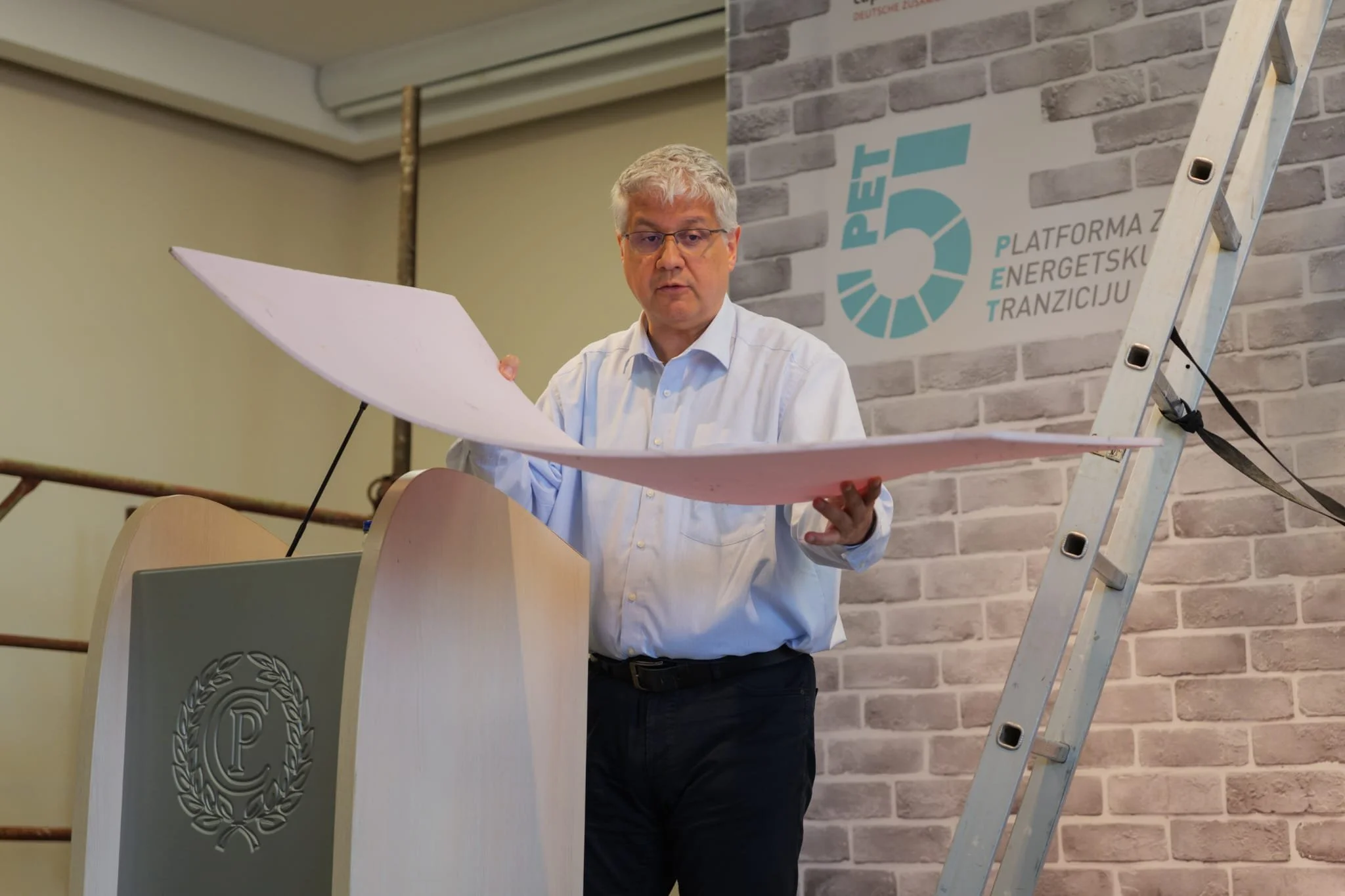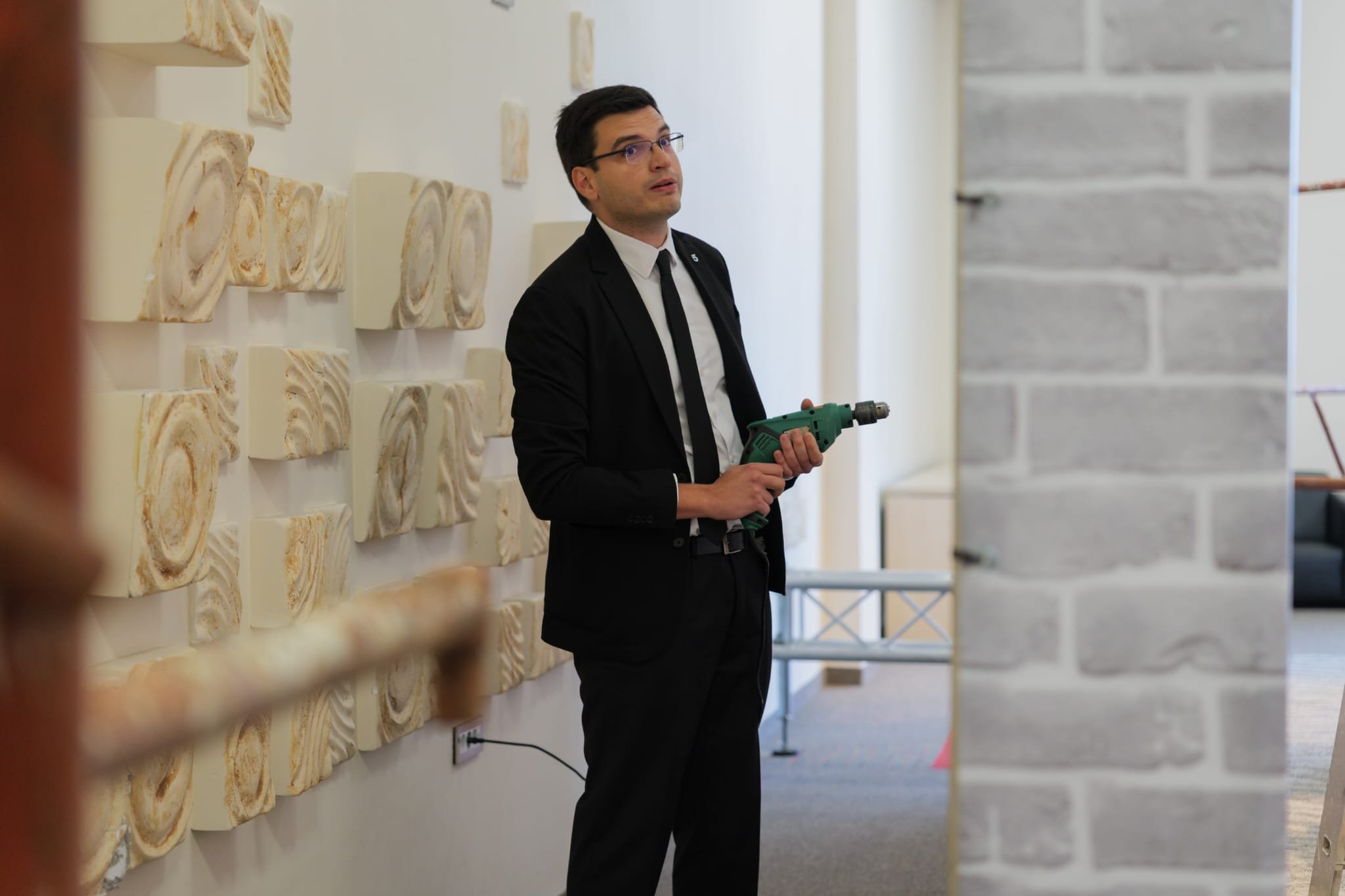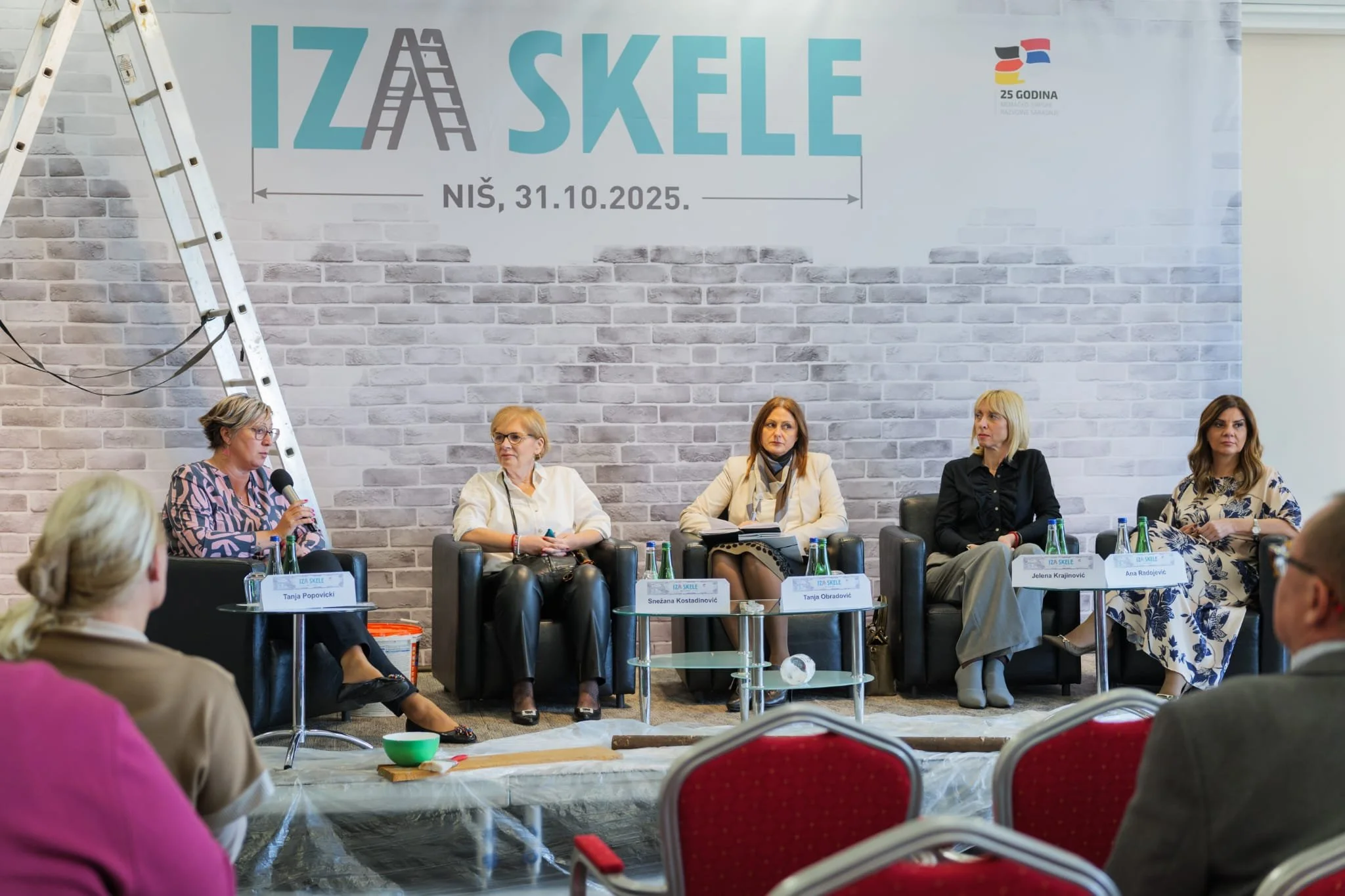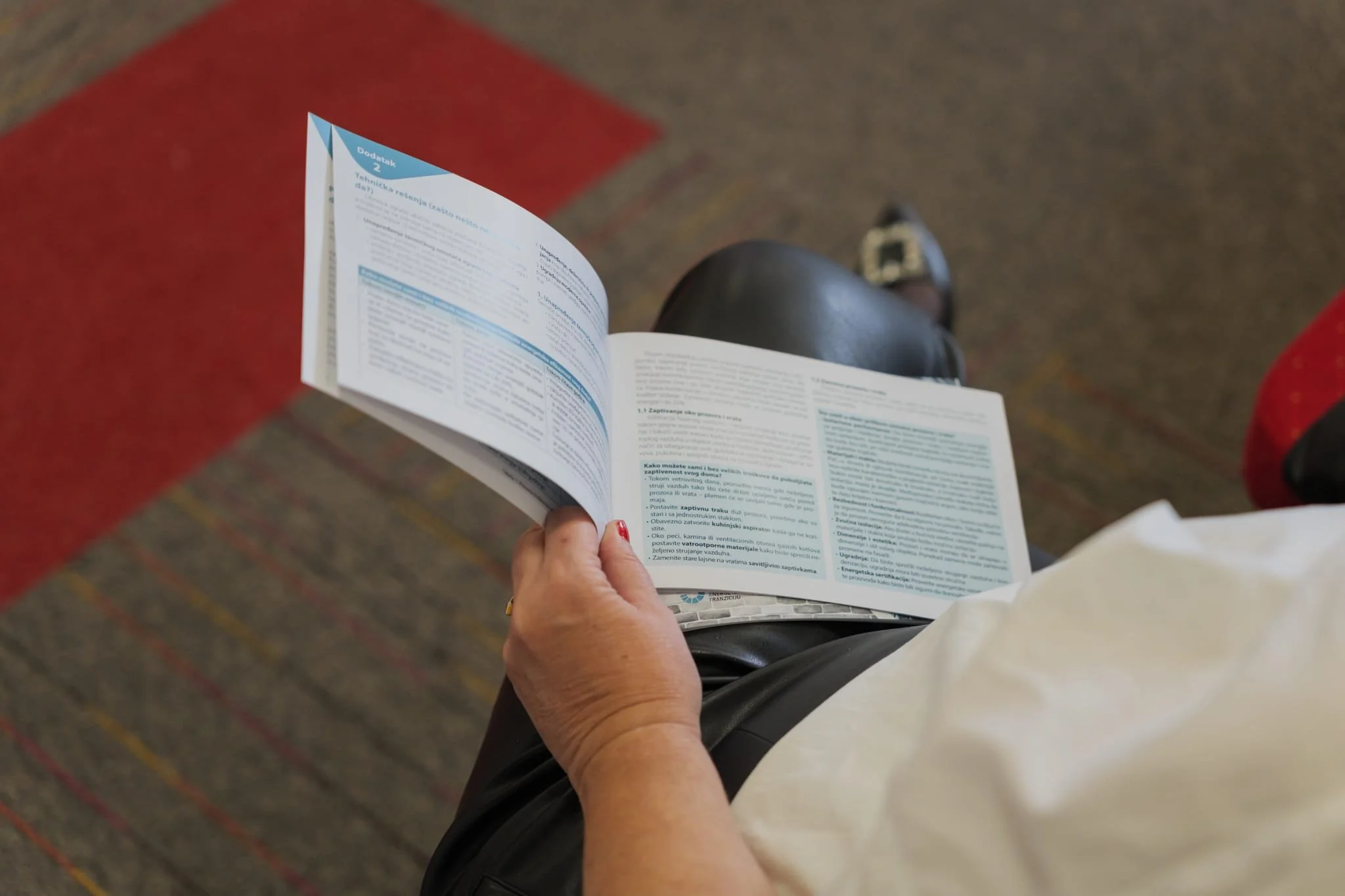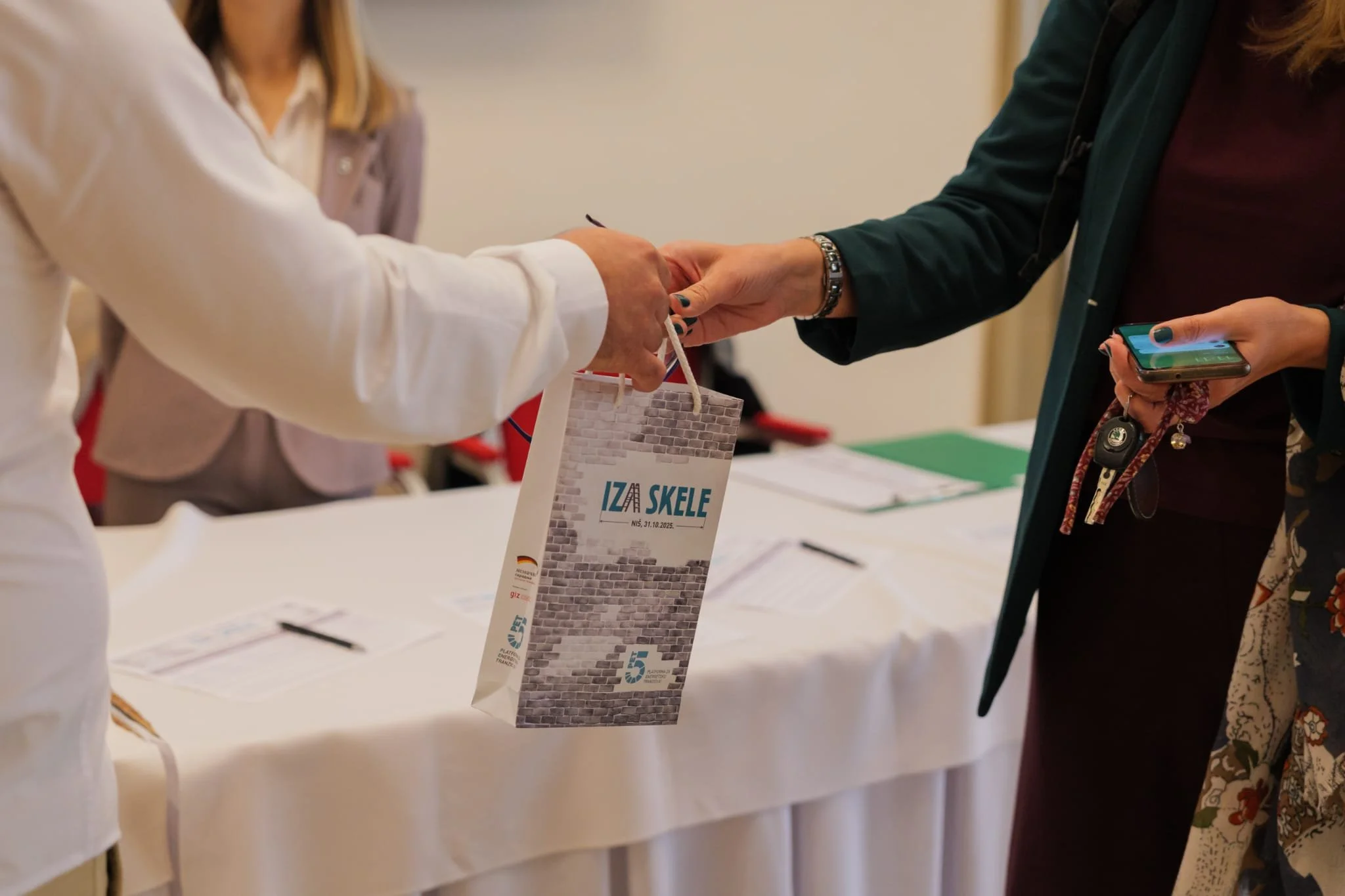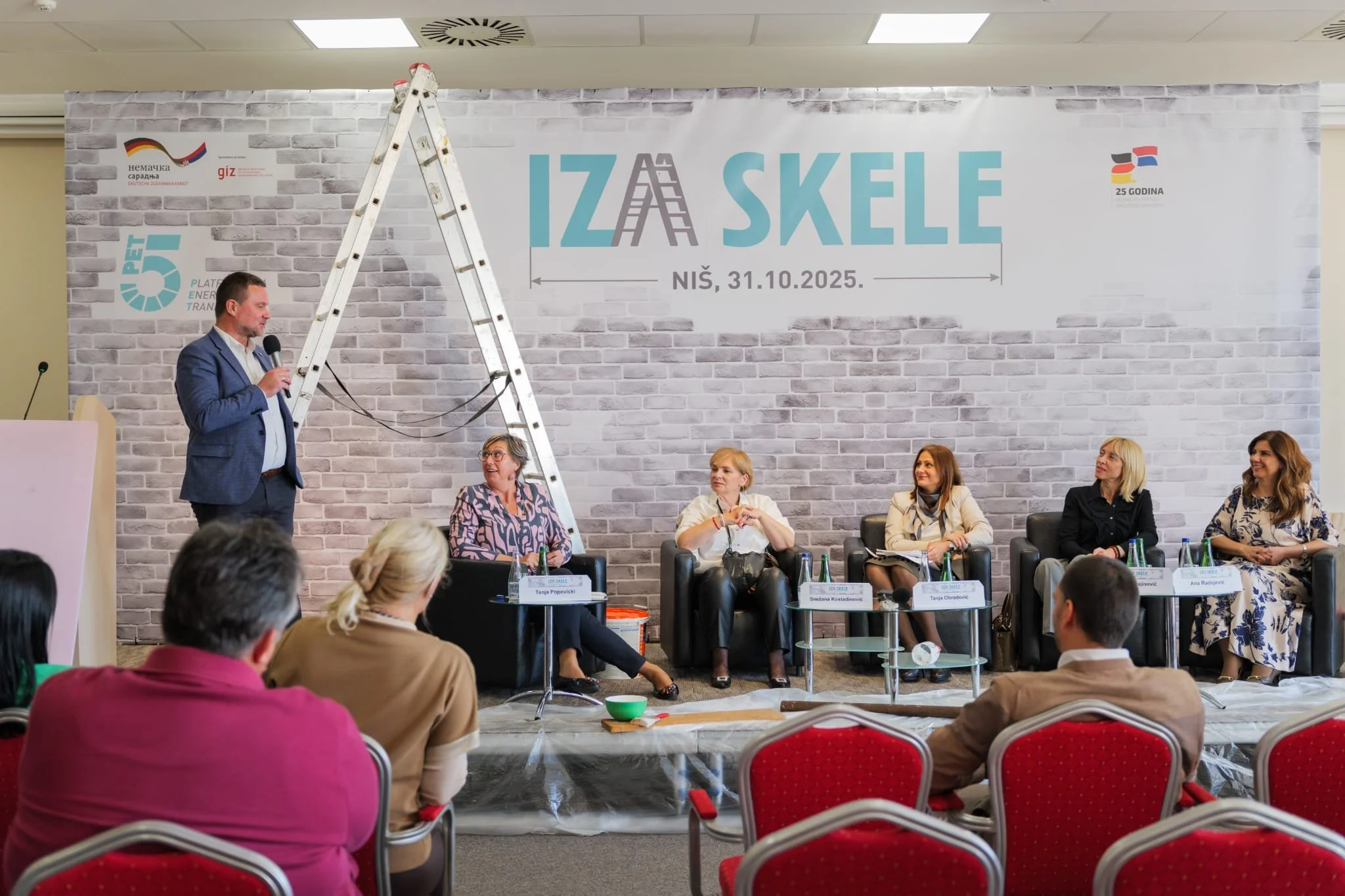"Behind the Construction – Demystifying Renovation of Buildings": Experts Gather in Niš to Address Systemic Challenges
Experts from the energy efficiency sector from across the country attended the expert conference "Behind the Construction – Demystifying Renovation of Buildings". The goal was to provide deep insight into the practical issues that lie "behind the construction" and to show that energy renovation is about more than just a "smaller bill," and that renovation projects require serious consideration - from how to secure apartment owners’ consent and all necessary permits to how to monitor savings and maintain, for example, new heating installations.
This event was held as part of the "Energy Managers in Local Energy Transition" project, implemented by the Platform for Energy Transition (PET) with the aim to empower local stakeholders in Serbia by enhancing their knowledge and capacities to facilitate citizen-led energy initiatives and improve energy efficiency.
The project is supported by German Development Cooperation in Serbia which is implemented by the Deutsche Gesellschaft für Internationale Zusammenarbeit (GIZ) GmbH in partnership with the Ministry of Mining and Energy of the Republic of Serbia.
The conference, organized by PET, brought together energy managers, designers, consultants, building managers, and representatives of public institutions. Guided by its mission to connect different stakeholders and share information, PET created a space for dialogue, emphasizing that sustainable solutions, improved living conditions, better public health, and increased general awareness of the importance of energy renovation can only be found through the exchange of different perspectives.
Bojan Gajić - PET
Key Messages from the Opening
The program began with introductory presentations by Bojan Gajić, Program Director of the Platform for Energy Transition, energy expert Aleksandar Kovačević, and Goran Vučković, PhD, from the Faculty of Mechanical Engineering in Niš and PET co-founder.
Bojan Gajić presented the new "Behind the Construction: A Guide to Building Renovation," a practical manual intended primarily for tenants and building managers. Gajić pointed out that the Guide sheds light on segments of renovation that are rarely discussed and provides answers to concrete questions before the project even begins. Through four basic steps - from the initial dilemma, through information gathering, the construction phase, to life in a renovated home - the Guide demystifies the process. It also contains key information about the role of the building manager, as well as appendices with examples of cost calculations for typical buildings.
Aleksandar Kovačević - Energy Expert
In his notable presentation, energy expert Aleksandar Kovačević analyzed the socio-economic aspects of energy efficiency in greater depth, emphasizing that the line between private investment and public good is extremely thin. He pointed out that although the renovation occurs on private property, the energy savings achieved directly contribute to the general public interest by reducing pressure on the country's energy system.
Kovačević specifically addressed changes in the tariff system for electricity consumption, particularly the lowering of the threshold for entering the more expensive, "red" consumption zone. He analyzed how this change directly affects the amount of electricity bills and warned that the poorest segments of the population will bear the greatest burden, as they will now cross into the more expensive tariff zone more easily.
Finally, Kovačević explained the economic paradox that often occurs after savings are achieved following energy renovation. Citing a theory which shows that after people reduce their energy costs, they do not save that money but rather redirect it to other consumption, thereby raising their standard of living. Instead of reducing total consumption, they increase it, which, he concluded, is a key element of successful economic growth and healthy societal economic development.
Based on his many years of experience and dozens of completed energy audits and conversations with building managers and tenants, PET co-founder Goran Vučković, PhD, reflected on several excellent, though not always successful, examples of energy renovation. Through eight carefully selected examples, he detailed all the potential challenges the energy renovation process brings but also gave forecasts about what awaits us in the coming period.
Goran Vučković, PhD - PET
Vučković pointed out that expectations from energy renovation are not always strictly related to the specific topic and the positive effects it brings, but that apartment owners very often see the project's implementation as an opportunity to solve some long-standing problems in the building (e.g., leaking roofs, unauthorized occupation of common areas by certain members of the housing community, etc.). He particularly emphasized that there are extremely dedicated, responsible, and honorable managers of collective housing buildings who deeply believe in the effects of energy renovation and who spare neither time nor energy to secure the support of a two-thirds majority for the project's implementation, but unfortunately, they sometimes fail in this endeavor. The most commonly cited reasons are a passive attitude and lack of interest from apartment owners, negative campaigns, and damaged interpersonal relationships within the building.
Professor Vučković also showed several high-budget examples where state-of-the-art, high-efficiency technologies were applied, but due to an unprofessional approach and improperly executed installations, the expected effects were not achieved. He also presented an example of a collective housing building where, after the replacement of the boiler plant and the rigid stance of the contractor and investor, the case ended up in court, with an epilogue that ultimately satisfied neither party.
In his presentation, Professor Vučković pointed out that in the coming period, we can expect new disincentives for the direct transformation of electricity into heat (such as the recent change in the tariff system and the lowering of the threshold for entering the most expensive (red) zone, and the increase in electricity prices for businesses and general consumption). On the other hand, at the national and local self-government levels, incentive measures for increasing energy efficiency and the use of RES will continue, through subsidies, ESCO models, and other financial mechanisms.
In the area of legal regulation, amendments to the Law on Planning and Construction are expected, or the adoption of a completely new law, given the significant volume of proposed changes. Among other things, an obligation is being introduced for existing buildings to obtain energy performance certificates: public buildings within three years, commercial buildings within five, and residential buildings within 10 years. A Rulebook on the method of conducting energy audits of buildings for energy certification purposes will soon be adopted, and new rulebooks on EE and energy certification of buildings that will include all forms of energy are expected. In order to protect and fully inform end-users, an obligation to possess an energy performance certificate during real estate transactions is being introduced, as well as the institution of an Energy Efficiency Advisor, especially for the building sector, industry, and municipal energy.
Panel: Debunking Myths Before, During, and After Renovation
The central part of the conference was a panel discussion titled "Myths and Misconceptions: Before, During, and After Building Renovation." Moderated by Tanja Popovicki (PET co-founder), the panel brought together female experts from various fields:
Tanja Obradović, Urban Planner, City of Niš
Ana Radojević, Energy Manager of the City of Kragujevac
Jelena Krajinović, Building Manager, Kula municipality
Snežana Kostadinović, PUC "Gradsko stambeno" (City Housing), City of Belgrade
Tanja Popovicki (PET), Snežana Kostadinović (Gradsko stambeno - City of Belgrade) and Tanja Obradović (Urbanist - City of Niš)
The panelists led a dynamic discussion, exploring the entire renovation "journey" from the citizens' perspective.
Ana Radojević highlighted the crucial importance of planning, direct communication with citizens, and providing timely information before renovation projects begin. Throughout her presentation, she emphasized the key role of the energy manager in leading the entire process and how the citizens of Kragujevac rely on their city's energy manager.
She was followed by Jelena Krajinović, the manager of a recently renovated building from Kula, who shared invaluable practical experience, describing the renovation process of the building she herself lives in. Krajinović confirmed how crucial the building manager's role truly is, especially in leading negotiations, ensuring constant and transparent information exchange with apartment owners, coordinating during the works, and finally, in the subsequent monitoring and maintenance of the new systems.
Jelena Krajinović (Building Manager Kula) and Ana Radojević (Energy Manager City of Kragujevac)
Tanja Obradović, an Urban Planner from Niš, emphasized that good planning and prior monitoring of the building's condition are necessary prerequisites for a successful and purposeful renovation. Snežana Kostadinović from PUC "Gradsko stambeno" spoke about concrete field situations she has encountered during her long-standing experience working with housing communities.
The event successfully connected key stakeholders and provided a platform for debunking common myths, sharing practical solutions, and strengthening professional networks to accelerate the energy transition in Serbia.
PDF: Behind the Construction: A Guide to Building Renovation guide + additional
























